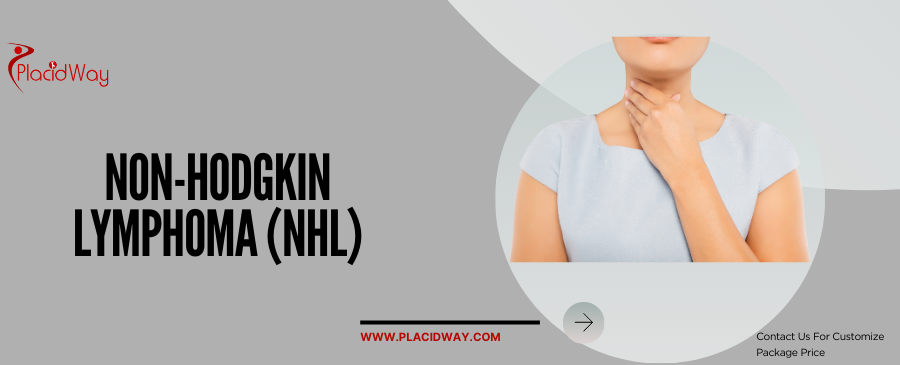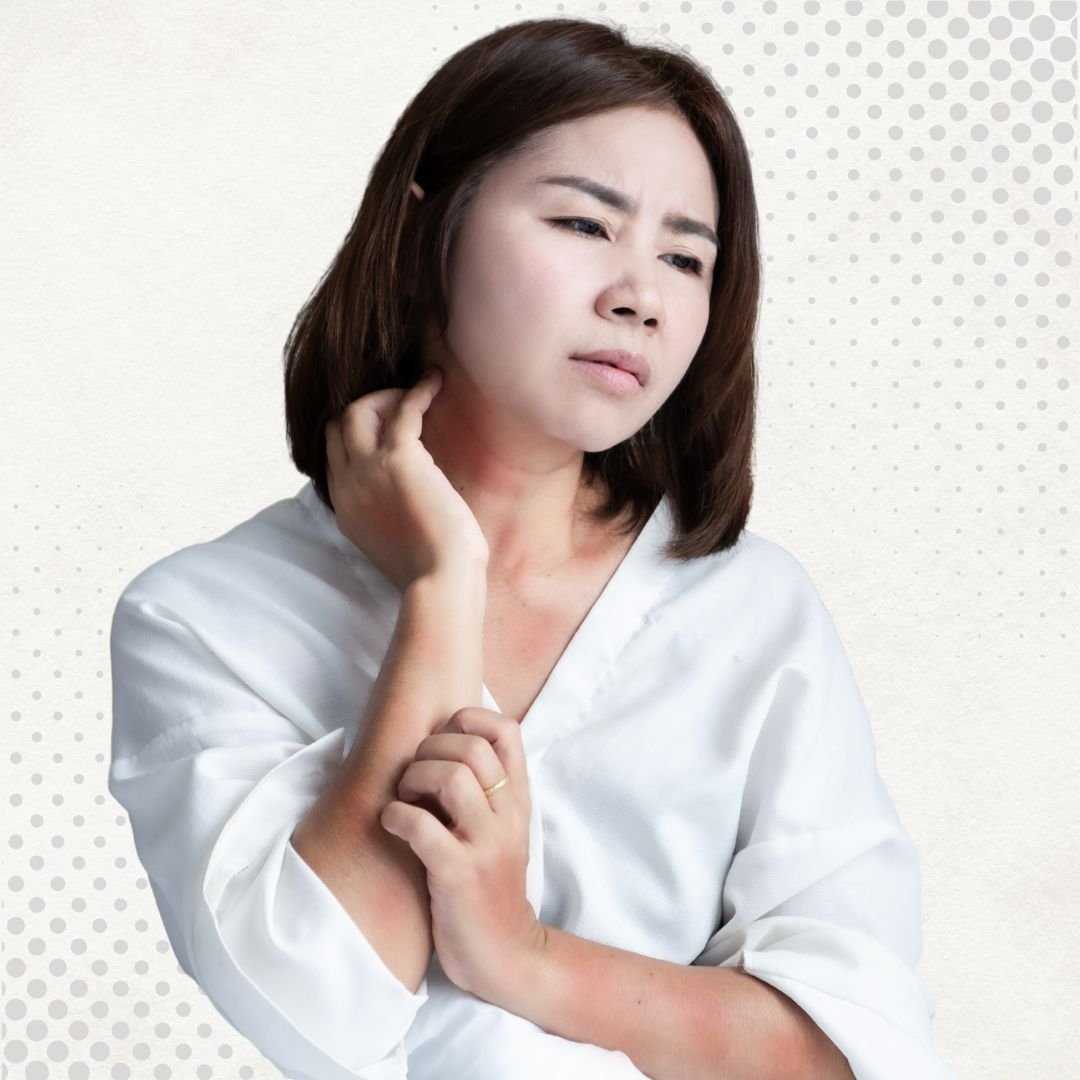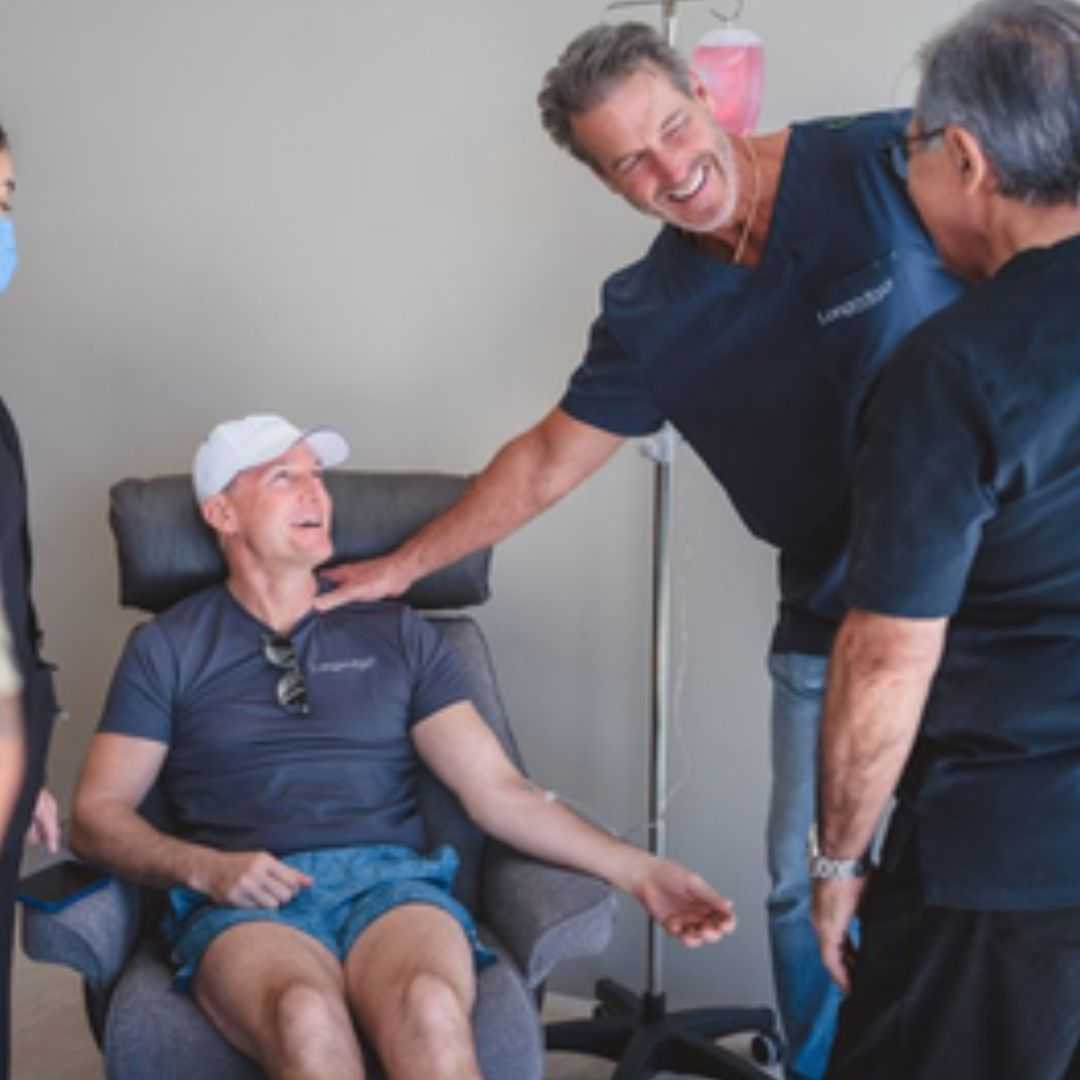
Navigating Non-Hodgkin Lymphoma: Comprehensive Treatment Options & Global Solutions
Receiving a diagnosis of Non-Hodgkin Lymphoma (NHL) can be an overwhelming experience, bringing with it a flood of questions and concerns. You might be searching for "what is NHL," "symptoms of lymphoma," or "best treatment for lymphoma." At PlacidWay, we understand the emotional and practical challenges this presents, and we're here to guide you through understanding this complex condition and exploring all available treatment avenues, including world-class options abroad.
Non-Hodgkin Lymphoma is a type of cancer that begins in lymphocytes, a type of white blood cell that is part of the body's immune system. These cells grow abnormally, forming tumors in the lymph nodes, spleen, bone marrow, and other organs. Unlike Hodgkin lymphoma, NHL encompasses a diverse group of cancers, each with its own specific characteristics and treatment approach.
While the journey with NHL can be challenging, significant advancements in medical science mean that many people achieve remission and live long, fulfilling lives. Treatments are highly personalized, ranging from chemotherapy and radiation to cutting-edge immunotherapy and targeted therapies. For many, seeking the most advanced or affordable care means looking beyond geographical borders. Medical tourism for NHL treatment offers a beacon of hope, providing access to leading specialists, state-of-the-art facilities, and often substantial cost savings.
This comprehensive guide will delve into everything you need to know about Non-Hodgkin Lymphoma, from understanding its symptoms and causes to exploring the various treatment modalities and the unparalleled benefits of considering international medical care. We aim to empower you with knowledge, clarity, and peace of mind as you make critical decisions about your health journey.
What are the common symptoms of Non-Hodgkin Lymphoma?
Understanding the "first signs of non-Hodgkin lymphoma" is crucial for early diagnosis. The symptoms of NHL can be subtle and often mimic those of less serious conditions, making it important to consult a doctor if you experience persistent or unusual changes. Key symptoms often include:
- Swollen Lymph Nodes: Often the most common sign, these painless swellings can appear in the neck, armpit, or groin. Unlike nodes swollen due to infection, lymphoma-related nodes may not decrease in size.
- "B Symptoms": This classic triad includes:
- Fever: Unexplained fevers, often recurring.
- Night Sweats: Drenching night sweats that soak clothes and bedding.
- Unexplained Weight Loss: Significant weight loss (more than 10% of body weight) over six months without trying.
- Fatigue: Persistent, overwhelming tiredness that doesn't improve with rest. Many patients search for "why am I so tired lymphoma."
- Itching: Generalized itching without a rash, which can be quite bothersome.
- Abdominal Symptoms: If lymphoma affects the spleen or liver, you might experience abdominal pain, swelling, or a feeling of fullness after eating only a small amount.
- Chest Symptoms: Lymphoma in the chest can cause cough, shortness of breath, or chest pain.
If you experience any of these symptoms, especially if they are persistent or worsening, it's vital to seek medical advice for proper evaluation.
What causes Non-Hodgkin Lymphoma and what are its risk factors?
Many patients wonder "is lymphoma genetic" or "can stress cause lymphoma." While the precise cause of NHL is often unknown, it's understood to arise from mutations in lymphocytes that lead them to grow uncontrollably. Several factors are known to increase the risk:
- Weakened Immune System: People with compromised immune systems, such as those with HIV/AIDS, organ transplant recipients taking immunosuppressants, or individuals with inherited immunodeficiency syndromes, have a higher risk.
- Infections: Certain viral and bacterial infections are linked to an increased risk of NHL. These include Epstein-Barr Virus (EBV), Helicobacter pylori (H. pylori) bacteria, Human T-cell Leukemia/Lymphoma Virus-1 (HTLV-1), and Hepatitis C Virus.
- Exposure to Certain Chemicals and Radiation: Exposure to some pesticides, herbicides, and solvents (like benzene) has been linked to NHL. High doses of radiation, such as from previous cancer treatment, can also increase risk.
- Age: The risk of NHL increases with age, with most cases occurring in people over 60.
- Autoimmune Diseases: Conditions like rheumatoid arthritis, Sjögren's syndrome, and lupus are associated with a slightly higher risk of developing NHL.
- Family History: While not strongly hereditary, having a first-degree relative with NHL can slightly increase your risk.
It's important to remember that having one or more risk factors does not mean you will definitely develop NHL, and many people with NHL have no known risk factors.
What types of treatments are available for Non-Hodgkin Lymphoma?
Treatment for NHL is highly individualized, depending on the specific subtype of lymphoma, its stage, and the patient's overall health. Many search for "new treatments for NHL" or "chemo for lymphoma" seeking the most effective options. Common treatment modalities include:
- Chemotherapy: This is a primary treatment, using drugs to kill cancer cells throughout the body. It can be given intravenously or orally. Common regimens include CHOP (Cyclophosphamide, Hydroxydoxorubicin, Vincristine, Prednisone).
- Radiation Therapy: Uses high-energy rays to kill cancer cells or shrink tumors in a specific area of the body. It's often used for early-stage localized NHL.
- Immunotherapy: These treatments boost the body's natural defenses to fight cancer.
- Monoclonal Antibodies: Such as Rituximab, which targets CD20 protein on lymphoma cells.
- Checkpoint Inhibitors: Drugs like Pembrolizumab or Nivolumab, which block immune checkpoints, allowing the immune system to attack cancer cells.
- CAR T-cell Therapy: A revolutionary treatment where a patient's T-cells are genetically modified to recognize and kill cancer cells, particularly effective for aggressive NHL that has relapsed.
- Targeted Therapy: These drugs focus on specific vulnerabilities within cancer cells, disrupting their growth and survival. Examples include Bruton's tyrosine kinase (BTK) inhibitors or BCL-2 inhibitors.
- Stem Cell Transplantation: Used for aggressive or recurrent NHL. High-dose chemotherapy or radiation is given to destroy cancer cells, followed by a transplant of healthy blood-forming stem cells (either from the patient – autologous, or a donor – allogeneic).
- Watchful Waiting: For very slow-growing ("indolent") types of NHL, some patients may not require immediate treatment and instead are closely monitored for any disease progression.
Who is eligibility for Non-Hodgkin Lymphoma treatment and how is it determined?
Determining the appropriate treatment path begins with accurate diagnosis and staging of the lymphoma, often with patients asking "what stage is my lymphoma?" Eligibility for specific treatments depends on several factors:
- Lymphoma Subtype and Stage: Aggressive lymphomas (e.g., Diffuse Large B-cell Lymphoma) often require immediate, intensive treatment, while indolent types (e.g., Follicular Lymphoma) might begin with watchful waiting. Staging (Ann Arbor system) determines how far the cancer has spread.
- Overall Health (Performance Status): The patient's general health, ability to perform daily activities, and organ function (heart, kidney, liver) are crucial. Robust health allows for more aggressive treatments.
- Age: While age alone isn't a barrier, older patients might have more co-morbidities requiring careful consideration of treatment intensity.
- Co-existing Medical Conditions: Other health issues like heart disease or diabetes can influence treatment choices and potential side effects.
- Diagnostic Tests: A comprehensive workup including biopsies (lymph node, bone marrow), imaging (PET/CT scans), blood tests, and sometimes spinal fluid analysis helps define the disease characteristics and extent.
A multidisciplinary team of oncologists, pathologists, radiation oncologists, and other specialists will review all findings to recommend the most effective and safest treatment plan.
What is the typical recovery time and what can I expect after Non-Hodgkin Lymphoma treatment?
The "life after lymphoma treatment" can be a journey of gradual recovery. Recovery time from NHL treatment is highly individual and depends on the type, intensity, and duration of therapy, as well as the patient's response and overall health. Generally, you can expect:
- Immediate Post-Treatment: Directly after active treatment (chemotherapy, radiation), patients often experience significant fatigue, nausea, and other acute side effects. This phase may last weeks to a few months.
- Short-Term Recovery (First 6-12 months): Energy levels gradually improve, and most acute side effects subside. However, persistent fatigue ("chemobrain"), mood changes, and some physical limitations are common. Regular follow-up appointments, including scans and blood tests, are crucial to monitor for remission or recurrence.
- Long-Term Recovery (Years): Many NHL survivors live full lives, but some may experience long-term or late-onset side effects such as peripheral neuropathy, heart problems, lung issues, secondary cancers, or infertility. Managing these requires ongoing medical care and a healthy lifestyle.
- Emotional and Mental Well-being: Coping with the psychological impact of cancer diagnosis and treatment is significant. Support groups, counseling, and mental health professionals can be invaluable.
A healthy lifestyle, including a balanced diet, regular exercise (as tolerated), and avoiding smoking and excessive alcohol, can aid in a smoother recovery and overall well-being.
What are the potential risks and side effects of Non-Hodgkin Lymphoma treatments?
Patients often search for "worst side effects of chemo" or "coping with lymphoma treatment." While treatments for NHL are effective, they come with potential side effects, which can vary greatly depending on the specific therapy used. Your medical team will work to prevent and manage these effects.
- Chemotherapy Side Effects:
- Common: Nausea, vomiting, hair loss, fatigue, mouth sores, changes in appetite.
- Serious: Bone marrow suppression (leading to increased risk of infection, anemia, bleeding), nerve damage (neuropathy), heart problems (cardiomyopathy), kidney or liver damage, infertility, and a slight increased risk of secondary cancers.
- Radiation Therapy Side Effects:
- Common: Skin irritation, fatigue, hair loss in the treated area, difficulty swallowing (if neck/chest treated).
- Serious: Long-term risks include lung damage, heart disease, thyroid problems, and an increased risk of secondary cancers in the treated area.
- Immunotherapy & Targeted Therapy Side Effects: These can be more specific to the drug. For example, Rituximab can cause infusion reactions. CAR T-cell therapy can lead to cytokine release syndrome (CRS) and neurological toxicities, which require specialized management. Checkpoint inhibitors can cause immune-related adverse events affecting various organs.
- Stem Cell Transplantation Side Effects: This is an intensive treatment with significant risks, including severe infections, graft-versus-host disease (GVHD) in allogeneic transplants, organ damage, and high treatment-related mortality rates.
Managing side effects is a critical part of treatment. Your care team will provide medications and strategies to alleviate discomfort and monitor for complications.
How do Non-Hodgkin Lymphoma treatment costs compare worldwide?
The "cost of lymphoma treatment" is a major concern for many patients. Healthcare costs for Non-Hodgkin Lymphoma treatment can be exorbitant, especially in countries like the United States, Canada, and Western Europe. This disparity often drives patients to seek "affordable cancer treatment abroad." The total cost depends on many factors, including the type and stage of NHL, the specific treatment protocol (chemotherapy, radiation, immunotherapy, stem cell transplant), hospital stay duration, medications, and follow-up care.
Here’s a general comparison of estimated costs for comprehensive NHL treatment (e.g., a full course of chemotherapy or immunotherapy) excluding highly specialized CAR T-cell therapy, which can be much higher:
| Country | Estimated Cost Range (USD) | Notes |
|---|---|---|
| USA | $100,000 - $500,000+ | Highest costs, but access to latest innovations and clinical trials. CAR T-cell can exceed $500,000. |
| Western Europe (e.g., Germany, UK) | $70,000 - $300,000+ | High quality, advanced care; costs vary by country and private vs. public system. |
| India | $20,000 - $80,000+ | Very cost-effective, high volume of international patients, JCI accredited hospitals. |
| Turkey | $25,000 - $90,000+ | Competitive pricing, modern facilities, often includes accommodation and transport in packages. |
| Mexico | $30,000 - $100,000+ | Proximity for North American patients, growing medical tourism sector, quality varies. |
| Thailand | $25,000 - $90,000+ | Excellent patient experience, JCI accredited hospitals, high quality of care. |
| South Korea | $40,000 - $150,000+ | Highly advanced technology and research, excellent patient outcomes. |
These figures are estimates and can fluctuate widely. It's crucial to get a personalized quote that includes all aspects of treatment and associated costs.
Why should I consider traveling abroad for Non-Hodgkin Lymphoma treatment?
For many, the idea of "cancer treatment tourism" or seeking "best cancer hospitals abroad" is driven by compelling advantages:
- Significant Cost Savings: As seen in the table above, the most prominent reason is often the dramatic reduction in cost, allowing patients to afford treatments that might be out of reach domestically.
- Access to Advanced Treatments: Some countries are at the forefront of specific research or therapies (e.g., CAR T-cell therapy in select European or Asian centers), which may not yet be approved or widely available in a patient's home country.
- Shorter Waiting Times: In healthcare systems with long waiting lists, traveling abroad can mean faster access to crucial diagnostic tests and immediate commencement of treatment, which can be vital for aggressive cancers like NHL.
- High-Quality Care and Expertise: Many international hospitals boast JCI accreditation, state-of-the-art technology, and highly skilled specialists who have trained in top global institutions.
- Privacy and Anonymity: For some, receiving treatment away from home provides a sense of privacy during a vulnerable time.
- Personalized Patient Experience: Many medical tourism providers offer comprehensive packages, including accommodation, translation services, and concierge care, enhancing the overall patient experience.
Which countries offer the best value and quality for Non-Hodgkin Lymphoma treatment?
When considering "top countries for cancer treatment" or "affordable cancer treatment destinations," several nations consistently emerge due to their blend of advanced medical capabilities, experienced specialists, and competitive pricing:
- India: A leader in medical tourism, especially for oncology. Offers world-class, JCI-accredited hospitals, highly skilled doctors, and significantly lower costs for a wide range of NHL treatments, including bone marrow transplants.
- Turkey: Known for its modern infrastructure, highly trained medical staff, and comprehensive medical tourism packages that often include accommodation and transport. Turkish hospitals excel in oncology and stem cell transplants.
- Mexico: A popular choice for North American patients due to its proximity. Offers a growing number of JCI-accredited facilities with good quality care, particularly in border cities and major urban centers.
- Thailand: Celebrated for its patient-centric care, luxurious facilities, and experienced medical professionals. Thai hospitals are well-regarded for advanced oncology treatments and excellent service quality.
- South Korea: A hub for cutting-edge medical technology and research. Known for its highly advanced diagnostic capabilities and innovative treatments, with excellent patient outcomes, though generally at a higher price point than other Asian options.
- Germany: While often more expensive than Asian options, Germany provides world-renowned expertise, particularly in specialized cancer centers and academic hospitals. Their focus on precision medicine and advanced research makes it a top choice for complex cases.
The "best" country will depend on your specific needs, budget, and the type of NHL and treatment required.
What should I expect when planning international travel for Non-Hodgkin Lymphoma treatment?
Embarking on "how to go abroad for medical treatment" requires careful planning. Here's what to expect in your "medical tourism checklist":
- Initial Consultation & Research: Start by researching potential hospitals and specialists. Many offer virtual consultations to discuss your diagnosis and treatment options. Medical tourism facilitators like PlacidWay can provide curated lists and facilitate communication.
- Medical Records & Documentation: You'll need to compile all your medical records (diagnosis reports, biopsy results, imaging scans, treatment history) in English and share them with the prospective international hospital for review.
- Treatment Plan & Quote: Once your records are reviewed, the international medical team will propose a treatment plan and a detailed cost estimate. Ensure this quote is comprehensive, covering all aspects of your care.
- Travel Logistics: This includes obtaining necessary visas for medical treatment, booking flights, and arranging accommodation. Many medical tourism agencies offer assistance with these aspects.
- On-Site Experience: Upon arrival, you'll undergo thorough evaluations. Hospitals often have international patient departments with translators and dedicated staff to assist you throughout your stay.
- Post-Treatment Care & Follow-up: Discuss the post-treatment care plan, including medication, rehabilitation, and how follow-up will be handled once you return home. Ensure clear communication between your international and local doctors.
PlacidWay specializes in making this complex process smooth and stress-free, connecting you with trusted global providers and managing the logistics.
How can I ensure safety and quality when seeking Non-Hodgkin Lymphoma treatment abroad?
The question of "safe medical tourism" and finding "best international hospitals" is paramount. Ensuring safety and quality for NHL treatment abroad requires due diligence:
- Accreditation: Look for international accreditations such as Joint Commission International (JCI), which signifies that a hospital meets stringent global healthcare standards for quality and patient safety. ISO certification is also a good indicator.
- Doctor Credentials: Verify the qualifications, experience, and board certifications of the treating physicians. Many international specialists have trained or practiced in Western countries.
- Technology and Facilities: Ensure the hospital has modern equipment, advanced diagnostic capabilities, and specialized oncology departments equipped to handle complex NHL cases.
- Transparent Communication: The hospital and medical tourism agency should provide clear, understandable information about your diagnosis, treatment plan, costs, and potential risks and benefits. Don't hesitate to ask questions.
- Patient Reviews and Testimonials: Read independent patient reviews and look for success stories related to NHL treatment.
- Medical Tourism Facilitators: Partnering with a reputable company like PlacidWay can significantly enhance safety and quality. We rigorously vet clinics and doctors, ensuring they meet high standards, and act as your advocate throughout the process.
- Second Opinions: Always consider getting a second opinion, both locally and from the prospective international hospital, to ensure confidence in the recommended treatment.
Are there patient success stories from abroad for Non-Hodgkin Lymphoma treatment?
Hearing "survivor stories lymphoma" can provide immense encouragement. Indeed, countless individuals have found successful and life-changing Non-Hodgkin Lymphoma treatment abroad. These "overseas cancer treatment reviews" highlight various aspects:
- Access to Innovative Therapies: Patients have traveled for specific CAR T-cell therapies or targeted drugs not yet available in their home countries, achieving remarkable remissions in aggressive or refractory NHL.
- Cost-Effectiveness Without Compromise: Many testimonials emphasize how they received high-quality care comparable to Western standards, but at a fraction of the cost, relieving significant financial burden during their cancer journey.
- Personalized and Compassionate Care: Patients often praise the individualized attention, thorough explanations, and compassionate approach of medical teams in international hospitals, which sometimes feels lacking in overwhelmed domestic systems.
- Shorter Waiting Times: For patients facing rapidly progressing NHL, the ability to start treatment almost immediately abroad has been a critical factor in their successful outcomes.
- Multidisciplinary Approach: International centers frequently offer comprehensive care, including supportive therapies, nutrition, and psychological support, which contributes to a more holistic healing experience.
These stories serve as powerful testaments to the growing viability and success of medical tourism for complex conditions like Non-Hodgkin Lymphoma, offering hope and practical solutions for patients worldwide. PlacidWay connects you with these trusted success stories and the facilities that made them possible.
Take the Next Step with PlacidWay
Ready to explore treatment options abroad? Discover top clinics, compare prices, and get a free quote tailored to your needs with PlacidWay.
CAR-T Cell Therapy | Chimeric Antigen Receptor T-Cell










Share this listing